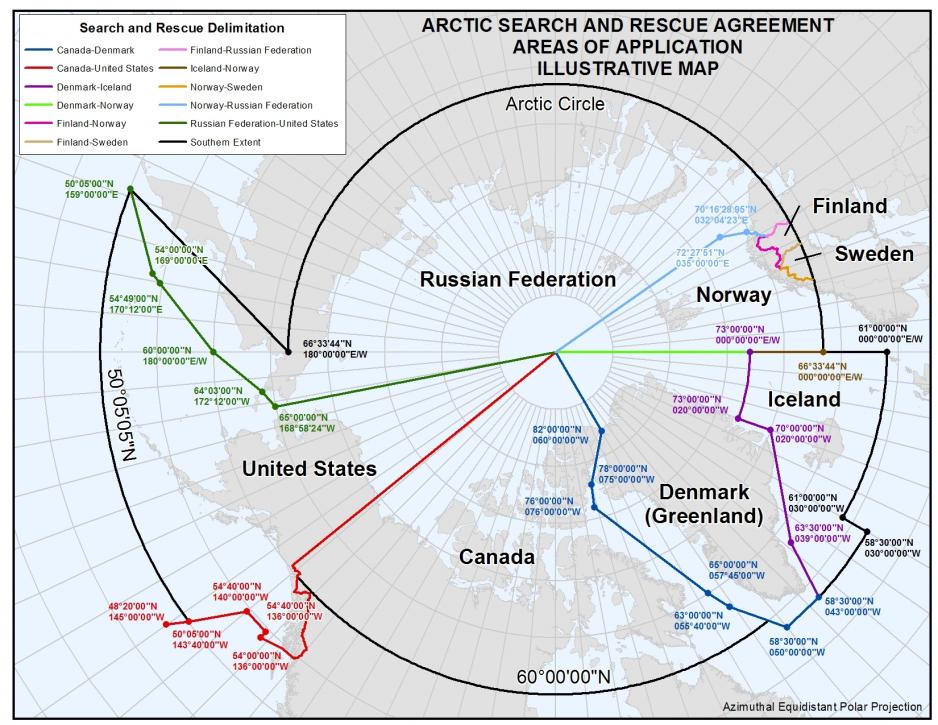Norway – A Preparedness Superpower in the High North?

Det norske beredskapsapparatet har ansvaret for svært krevende sjø- og landområder i nord, skriver professor Odd Jarl Borch, og etterlyser Justis- og beredskapsdepartementets engasjement. // The Norwegian preparedness apparatus holds the responsibility for very demanding sea and land areas in the north, professor Odd Jarl Borch writes. He warrants the engagement of the Ministry of Justice and Preparedness to meet new challenges.
Changes in activity patterns in the High North requires us to think critically about the preparedness resources we will need in the coming years. The question is who will take the responsibility, professor Odd Jarl Borch writes.
By: Odd Jarl Borch
The Norwegian preparedness apparatus holds the responsibility for very demanding sea and land areas in the High North. This has been highlighted through two major SAR operations during the past week; one in the Hinlopen Strait on Svalbard, the other in the Troms mountains. The rescuing of 14 fishermen from the ‘Northguider’ trawler in dark, snowy gales demonstrated the competences we hold in the SAR apparatus. It also revealed limitations to capacity when it comes to the existing SAR and oil-spill preparedness on Svalbard.
Ski mountaineering tourists
The ongoing SAR operation regarding missing foreign ski mountaineering tourists in Troms mountains, in terrain with a high risk of avalanches, demonstrates the apparatus that can be mobilized in almost no time through the emergency response agencies, the volunteer organizations and the armed forces. However, it also demonstrates the risk to which those involved are exposed during SAR operations, as well as the importance of thorough situation assessments and airborne resources.
Over the past few years, Norway has invested heavily in civilian emergency preparedness. New AW101 helicopters will over the next two years be phased in on the mainland to replace the worn-out SeaKing helicopters. The Coast Guard has three new vessels under construction to replace the old Nordkapp class vessels. These can carry two of the top modern NH-90 helicopters that are at long last being commissioned to the Coast Guard.
Also, the national police reform has led to improved coordination of the SAR apparatus using top expertise on all levels. Providing assistance from the armed forces to the civilian apparatus is more streamlined than before.
A preparedness superpower in the High North
International studies conducted through the MARPART projects coordinated by Nord University show that no other Arctic country has invested as much as Norway in its emergency SAR resources. We can thus go far in calling ourselves “a preparedness superpower in the High North”.
However, the same studies also show that Norway as a preparedness nation still has some way to go. Historically, we have had the most extensive sea traffic in the Arctic. Our fishing fleet has through all times sought out new fishing and catching areas in the north, and frequently taken risks, as can be seen in the case of the ‘Northguider’. We have an increasing amount of tourists coming in the winter, inspired by fabulous advertising images of northern lights and spectacular ski mountaineering.
We see that cruise vessels are increasingly large, arrive earlier and depart later in the Svalbard region. Some 30+ new expedition cruise vessels are currently under construction, including two for the Norwegian company Hurtigruten. These are marketed as vessels that will operate in extreme and remote areas, some even to the North Pole.
There is a change in the activity pattern in the High North that forces us to critically reconsider which emergency preparedness resources we will need in the coming years.
The question is who will step up to the responsibility. On the mainland side, we lack police officers in the districts. We lack the resources to conduct realistic exercises that can provide necessary experience in facing major incidents.
In a departmental drawer…
One out of a very limited number of full-scale exercises in is organized by Nord University in Bodø. Nord University has spent significant amounts on Exercise Nord and the establishing of NORDLAB; an exercise and test center for preparedness focusing in particular on the High North, fortunately with major regional support from the Nordland County Administration.
Ever since the disastrous July 22 incident, it has been pointed out that collaboration competence is lacking, amongst others in two whitepapers from the Ministry of Justice and Preparedness. These whitepapers appear to have been put in a MoJP drawer.
It is rather characteristic that the Ministry of Justice and Preparedness, being the department in charge of preparedness, also has been absent when it comes to mapping the need for preparedness in light of new challenges. This has instead been carried out by the maritime industry through the SARINOR projects. The EU has funded a major innovation project coordinated by the Joint Rescue Coordinaton Center North Norway. The MoJP is, once again, very absent.
The Hinlopen SAR operation demonstrated that the SAR helicopters available on Svalbard have their limitations when it comes to distance and capacity. It has also been argued for a long time that Troms County lacks helicopter preparedness related to police and fire operations, major ambulance assignments, and to SAR operations like those we have witnessed during the past few days.
Is northern preparedness on the agenda?
What is the Ministry of Justice and Preparedness doing to execute the options we have on six further SAR helicopters to cover these gaps? What is done to further clarify the need for a more robust oil-spill preparedness on Svalbard in winter, amongst others through subcontracting another icebreaker class vessel long requested by the Coast Guard? These are important questions for all industry sectors and communities in the High North.
The government’s High North Strategy listed security and preparedness as a prioritized area. Is security and preparedness a topic in the on-going government negotiations?
Odd Jarl Borch is professor at Nord University and at UiT Norway’s Arctic University
This op-ed was originally published in Norwegian and has been translated by HNN's Elisabeth Bergquist, with the author's approval.
